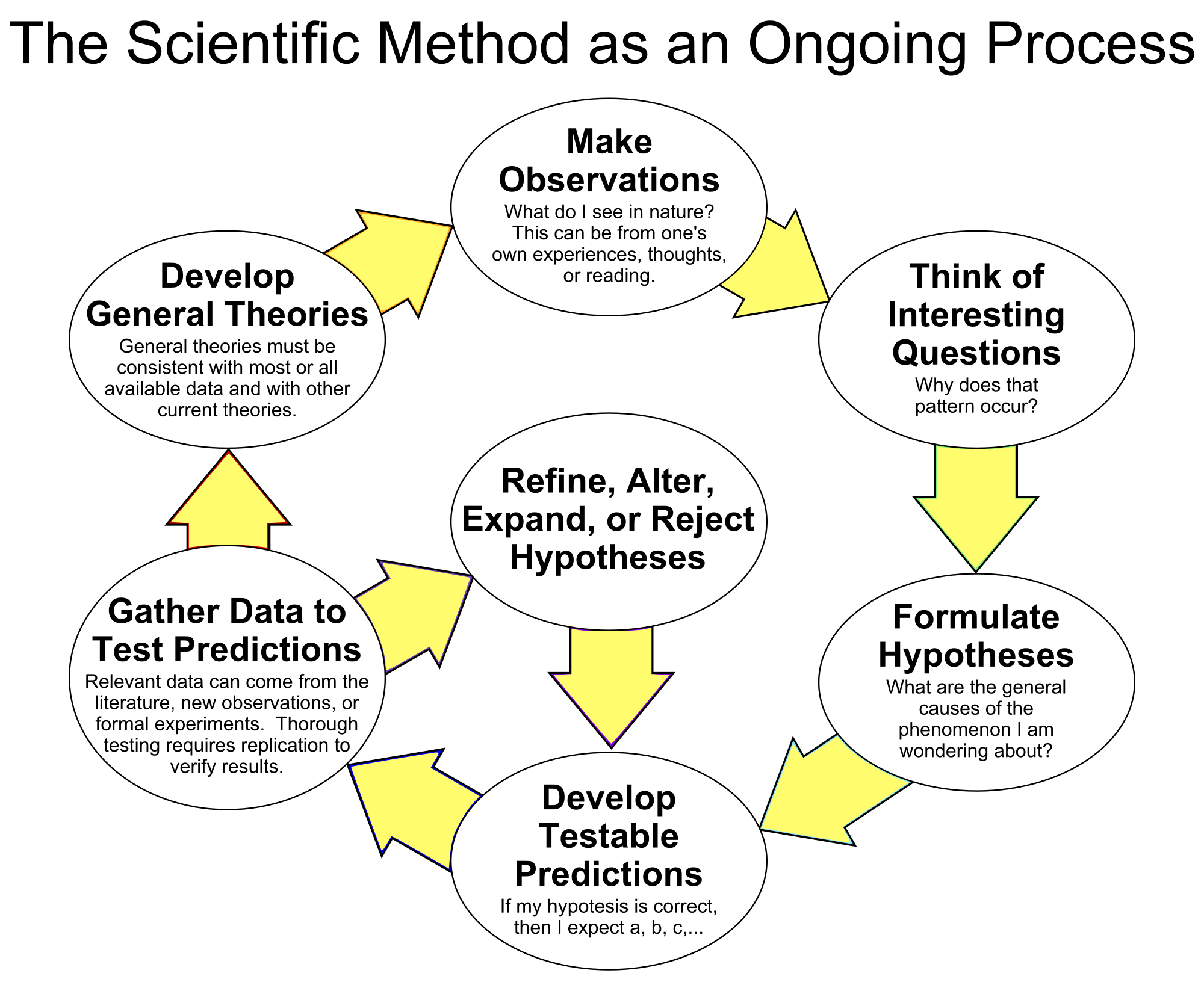How do scientists know gravity is the reason we don’t fly
away, that there used to be dinosaurs on the earth, and that humans have DNA?
Do scientists really know that climate change is caused by humans, vaccines
are effective, and that evolution occurs by natural selection?
Scientists make
conclusions based on the scientific method, which Isaac Newton was a founder
of. In the 1600s Isaac Newton was forced to stay at his home in
Lincolnshire because the bubonic plague was rampant in Cambridge. He wrote in a
journal about some of the questions of life, like gravity, motion, and
calculus.
 |
| Newton's journal |
Newton made two observations, which led to his experiments
on color and light, or optics. It was believed that color was made through
mixing light and dark, but
Newton
observed that black print on his book looked grey when he viewed it from
far away. One day, he made an observation that when he projected concentrated
light (through a hole in his shutters) into a glass prism, it was a band of the
colors of the rainbow when it came out the other side.
 |
| White light shining through a prism into a rainbow of color |
‘In a very dark Chamber, at a round hole,
about one third Part of an Inch broad, made in the Shut of a Window, I placed a
Glass Prism’. See Opticks, Prop. II, Theor. II Exper. 3.
Because of this observation, Newton continued doing
experiments on light, and his results eventually led to the discovery of white
light and the visible light spectrum, among many other important discoveries
for optics. To get to these conclusions, Newton followed the scientific method,
which he was one of the founders of.
The scientific method is the gold standard for scientists
when they are conducting research. I spent the last five years of my life
conducting research, mostly related to chemical reactions. I finished my final
exam and dissertation a couple of weeks ago, which wrapped up the findings of
my experiments from the past five years, and is the reason I have been absent
for so long, for which I apologize! But I am finally a doctor*, so maybe you can
trust me more now, or something like that, because I spent the past 5 years
learning to properly use this method.
*In no way am I qualified to diagnose or treat medical conditions, that's different kind of doctor
So how exactly do trained scientists and engineers conduct
research, and what do they do with it? Why is there disagreement among scientists
about scientific findings and their meanings?
The Scientific Method
leads to scientific claims
Acquiring knowledge is something that humans do on a daily
basis from the time we are born. The way we collect that knowledge, however,
varies. For a method to be considered scientific, the evidence must be
measureable, or observable. This is a long and continuing process, beginning
with an observation lacking an explanation. Because humans are curious, they
devise questions and ideas about why they observe something. This is called a
scientific question, and a hypothesis (or a prediction or idea about the answer
to the question).
In the case of Isaac Newton, once he noticed that the prism
showed a rainbow of color, he wanted to figure out why. His hypothesis was that
the colors were in the sunlight that was shining into his bedroom, and if all
the colors were combined again, it would create white light again.
The next step in the scientific method is to test the
hypothesis. What distinguishes “scientific” is this step, where the hypothesis
must be tested using something measureable and reproducible. The data or
observation collected is then analyzed to draw a conclusion.
To test his hypothesis, Newton placed another prism in front
of the first prism, upside down this time, so that the light pattern was
reversed. He observed that the light combined into the second prism to produce
white light again, his hypothesis was correct. An explanation for the
observation of color separation in the prism is that white light is made up of
the different colors of the rainbow.
 |
| Newton's experimental setup |
The final step of the experimental method is to reproduce
the experimental results until the theory and the observations have no
inconsistencies. Newton’s light prism experiment has been successfully
replicated time and time again, and never proven to have any inconsistencies.
Other possible explanations must be tested and confirmed or denied to be true.
Through this rigorous method, the final conclusion for Newton’s observation was
that white light is made up of all the colors in the rainbow.
 |
| The scientific method has evolved and become more stringent as time has gone on, but the main steps of it are shown here. |
Theories and Laws
Once a hypothesis is proven, does that give us a theory or
law? Not necessarily either. There is a huge misunderstanding about scientific
theories and laws; some people think a theory is something we are unsure about.
While this is true in the general English language, it is different in the
realm of science.
A theory is an
explanation acquired using the scientific method which has been tested and
confirmed repeatedly with experiments and observations. It explains why something happens. It is developed when all of the possible
hypotheses have been tested, which leads to a single conclusion. Theories can
then be used to make predictions.
The word theory is often confused with hypothesis in everyday
language. Saying that you have a theory about how those New England footballs
lost their air – Tom Brady deflated them – is not really a theory, it’s a
hypothesis, based on the fact that the footballs had less air than was allowed.
Other hypotheses were that the weather caused the pressure in the balls to
decrease, or that the team equipment manager tampered with them.
On the other hand, anthropogenic climate change is a theory,
an explanation for the reason the earth is heating at an exponential rate. It
is based on experimental methods and results, which examine many different
hypotheses. Most of the results have confirmed the explanation that fossil fuel
use is a reason for the acceleration in the temperature change. These
measurements are made using scientific laws.
A law is a
description of how something happens
using math or some other description. For example, Newton derived laws to
explain how objects interact with each other, by relating their forces, masses,
and accelerations (F=ma). Laws can be used to devise theories, like the theory
of gravity, or the theory of relativity.
This video explains the scientific method in terms of facts,
hypotheses, laws, and theories, and illustrates their differences:
Red meat
was found to cause cancer! Should you stop eating red meat? Well, that is a
personal choice, but before the FDA and medical experts can recommend we stop
eating it, more studies and evidence need to be collected, like was done for
smoking cigarettes.
 |
| Medical consensus is that smoking cigarettes causes cancer. |
When a new conclusion is presented, it is important to
replicate its findings. This is especially important when the conclusion has
policy implications. Scientific consensus is a general agreement between a
community of experts in a certain scientific field.
An important thing to remember is that consensus doesn’t
have to be unanimous, but it is general agreement of other scientists. This is
established using the communication of scientific results to other scientists
at conferences, through publishing scientific studies, replication from other
scientists, and the peer review process.
Peer review is
another important concept when we are discussing scientific findings. Before a
new scientific result can be published in a reputable journal, it is reviewed
by other experts with similar competency in that specific field of science. For
example, in my research, other scientists who work with methods using quantum
mechanics for biomolecules are my peer reviewers. They get to review my results
before they are published, and object to anything that may seem wrong with my
experimental method, or suggest follow up experiments that are needed to check
the work for error. Typically the study goes through several rounds of
revisions with peer reviewers and editors before it is published in a
scientific journal.
So, scientists review each other’s work down to every
detail, and then they try to replicate each other’s results. If those results
are easily reproducible, other scientists can begin to form conclusions based
on a broad body of work, and scientific consensus is reached.
Because there are inherently a small number of scientists
who disagree with the majority, scientific consensus is rarely unanimous, but
recommendations are typically made based on that consensus. Unfortunately, science has become politicized because of the small amount of scientists who
disagree with the consensus for various reasons.
For example, as is highly cited, over
97%
of scientists agree that climate change is caused by burning fossil fuels.
3% of scientists believe that it is caused by something else, and many of them
were given money by fossil fuel companies to do studies to find other links. The media portrays this as a general disagreement within the scientific community, which is false. The study linking vaccines to autism was retracted, and no other study has ever
been able to replicate its results. There is a scientific consensus that
vaccines
do not cause autism, and they are completely safe and necessary.
The big takeaway message here is that scientists don’t tend
to make big claims that change the way we live unless they are absolutely sure.
It is important to make sure you look up information from the scientific source
so it doesn’t get buried by the bias of reporters and politicians. Make sure it is published in a peer-reviewed journal. And keep in
mind that if there is only one study reporting an important finding, don’t
freak out until there are more to confirm and gain a scientific consensus.
If we didn't have the scientific method and other scientists to help us, our heads might explode!
Cheers to your brain and thanks for reading!
Like my
Facebook page to stay up to date on blog posts and other science findings!
I made a new Twitter account, @KineticKelly, linked on the side, for those of you who don't want to see my football tweets.























